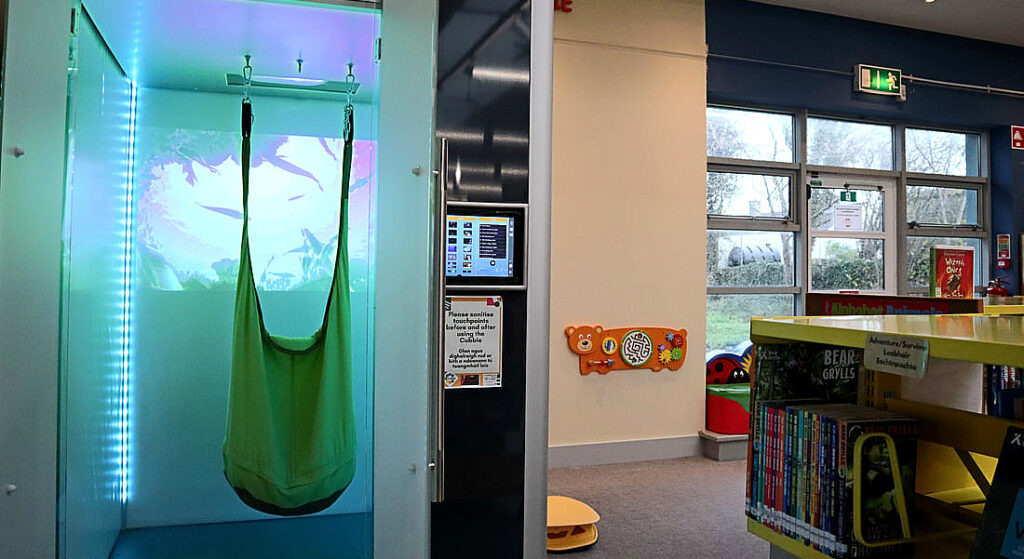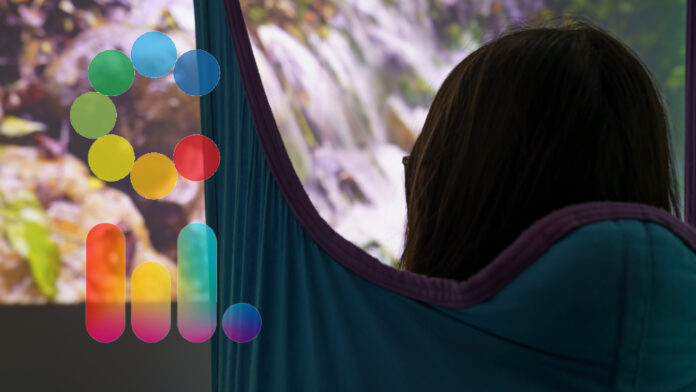Global mobile virtual network operator (MVNO) Wireless Logic is providing IoT networking and airtime to Ireland-based ‘sensory hub’ provider Cubbie to regulate immersive environments in schools, hospitals, libraries and other locations in the UK and Ireland. Cubbie works with local councils, education authorities, and healthcare providers to establish customisable and self-contained spaces with adjustable lighting, sound, and visuals for those with sensory sensitivities, and for anyone seeking “comfort and focus” in a neutral environment.
Its hubs – large walk-in units (see image) – are designed mainly to help those with neurodivergence including autism, ADHD, sensory processing difficulties. and social-behavioural emotional needs. It claims its multi-sensory spaces reduce stress and anxiety by 60 percent in under 15 minutes; they adapt to provide stimulating or calming environments based on the user’s needs, helping them regulate their senses and return to “participating with confidence”, said a statement. They are all accessible by wheelchair.

UK-based Wireless Logic is supplying its IoT core network, Conexa, to connect existing and new hubs, and to enable people to access individualised programmes at any location, with occupational therapists overseeing their progress. It said: “Conexa is already improving connectivity uptime for the hubs and will eventually support streamlined manufacturing, distribution processes and advanced data analytics… Resilient connectivity is essential to ensure Cubbies stay online, enabling their cloud-based software to deliver personalised programmes tailored to each person’s sensory profile.”
Each hub (cubbie/cubby) has a multi-IMSI SIM to switch over-the-air between network operators without requiring physical access for SIM upgrades/swaps. Multi-IMSI technology, based on a single SIM-type, also supports simpler manufacturing and distribution, wherever the hub units are destined, noted Wireless Logic. They can be connected in the Conexa system on arrival, it said. “This, combined with reduced demand on staff to manage day-to-day reliability, will free up time and resources so Cubbie can make more use of insights into usage and effectiveness,” it said.
David McIntyre, inventor and founder of Cubbie, said: “Sound, light, and other sensory inputs can be overwhelming for people with sensory processing difficulties; they can even cause pain. Cubbie’s software-driven technology links schools and other sites with sensory integration experts so children and adults with neurodivergence, sensory stress or anxiety can positively engage in education and other daily activities, rather than being excluded…. As we expand to serve more communities, we need robust IoT connectivity that won’t let us down.”
Colin Neale, principal business development manager at Wireless Logic, said: “Cubbie’s support for individuals with sensory needs and anxiety is incredibly inspiring. Ensuring every Cubbie is available to alleviate distress and support stretched resources in education, healthcare and beyond is critical. Conexa’s robust and flexible connectivity is not only meeting these needs but also helping Cubbie simplify manufacturing and distribution and learn from its data to inform ongoing product innovation.”

